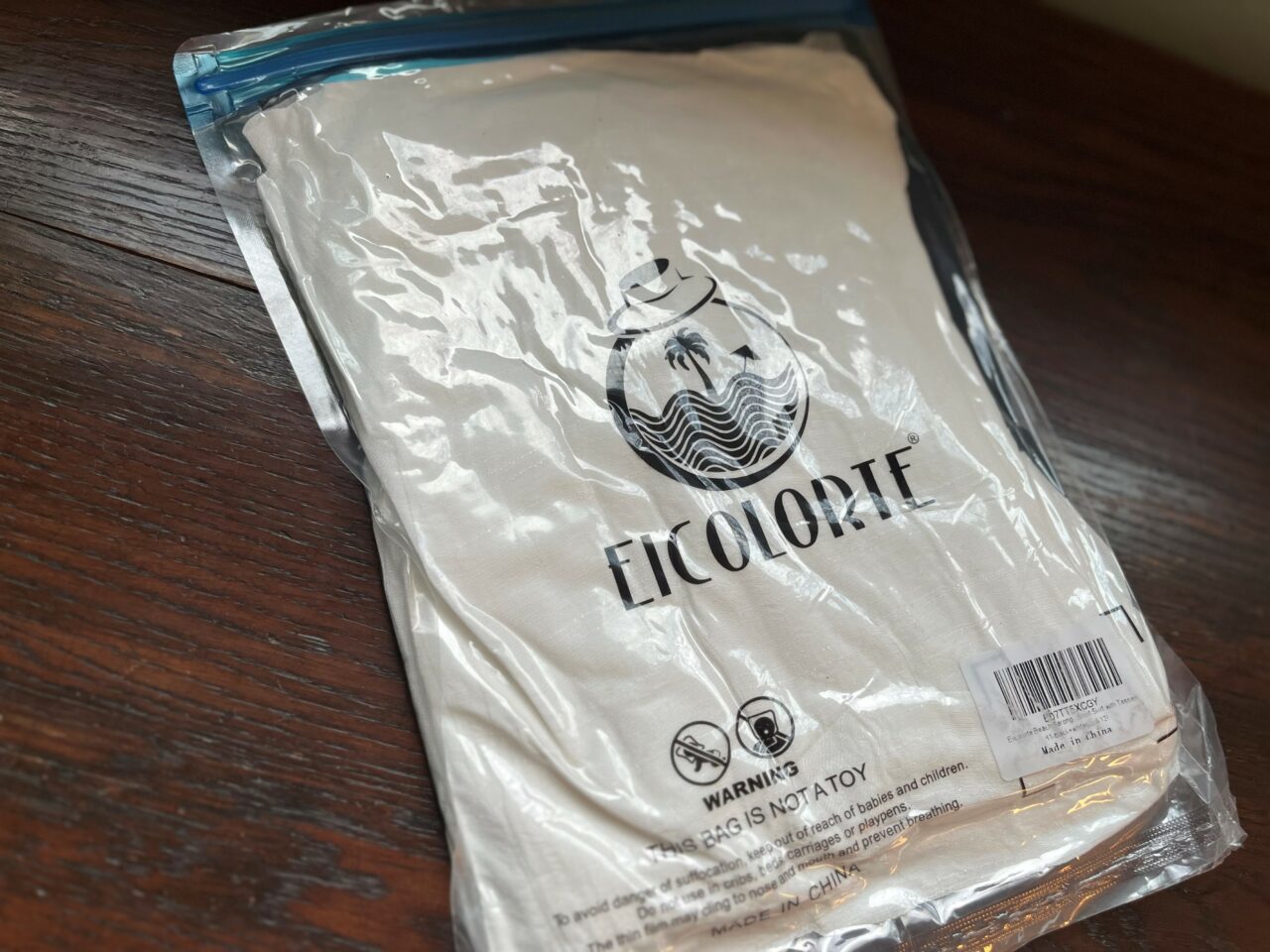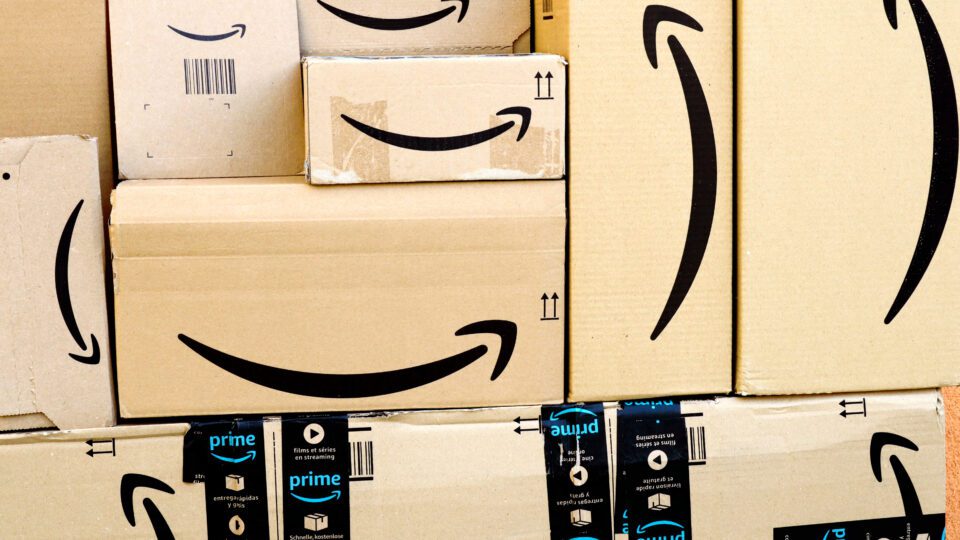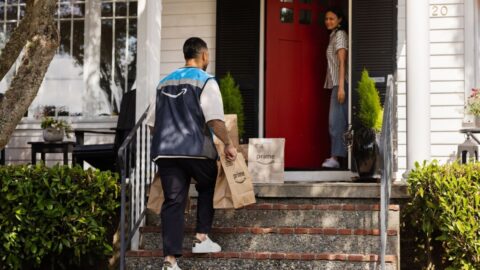For households across America and the world, the Amazon “smile” has become a familiar feature of their daily lives. Emblazoned on countless corrugated boxes and bag mailers, it greets folks as they arrive home or provides a welcome respite in the middle of the day.
So it’s a bit surprising that Amazon would be willing — is even pushing — to get rid of that “brand moment” at the point of delivery. And yet that’s exactly what Amazon is doing with its Ships in Product Packaging (SIPP) program, which, as the name suggests, allows products to ship in their original box or bag without any added Amazon packaging.
Soon many more Amazon orders will be arriving without that friendly Amazon “over-box,” because as of today SIPP is expanding to all Fulfilled by Amazon (FBA) sellers in the U.S. and Canada. Previously only available for Amazon’s first-party products and those of its retail vendors (which have a more traditional, wholesale-style relationship with the company), this represents a huge expansion given that FBA sellers account for the majority of the products sold on Amazon in both the U.S. and Canada.
The reasons are many: sustainability, cost savings, delivery efficiency and a better customer experience (for both of Amazon’s customers — the end consumer and its third-party sellers). But perhaps the biggest reason is that Amazon has grown so ubiquitous and so influential that it can.
Over the last few years, Amazon’s brand recognition has become very nearly absolute while, at the same time, the importance of third-party sellers to its business has increased. As a result, Amazon has slowly begun to cede the spotlight to these other brands: Sellers can now have branded storefronts on Amazon.com and, even more revolutionary, they can offer the benefits of Prime membership (namely fast, predictable delivery) to shoppers on their own direct-to-consumer sites. So it’s actually not that big of a risk for Amazon to cede the territory of packaging as well.
Retail TouchPoints went behind the scenes with Amazon and several FBA sellers that participated in the SIPP pilot to find out more about what’s involved in making this shift happen and what the results have been so far as it expands more widely across North America.
The Benefits of Giving up the ‘Over-Box’
SIPP isn’t new. Amazon began trialing the program back in 2015 with its own first-party products that fit the bill (that is, were already packaged in material that was sufficiently durable for delivery). Then in 2019, the program was expanded to Amazon’s retail vendors. As a result, in 2022, 11% of packages globally were shipped without Amazon packaging, amounting to millions of deliveries. Since 2015, Amazon has avoided using more than 2 million tons of packaging material as a result of SIPP and other packaging innovations.

One can only imagine the impact SIPP will have once FBA sellers begin to participate. Plans for the expansion were first announced at Amazon’s annual Accelerate conference for its third-party sellers, where VP of Worldwide Sustainability Kara Hurst shared that a SIPP pilot program with some FBA sellers was underway. Now, all FBA sellers in North America have the option to participate, and to incentivize them Amazon is offering discounts on FBA fulfillment fees for products that qualify, ranging from 4 cents to $1.32 depending on an item’s size and weight.
Amazon also is encouraging these sellers to make the delivery moment their own. “Redesigning your packaging can drive more efficiency and lower costs because rather than optimizing for appeal on a physical store shelf, you can optimize for ecommerce fulfillment and delivery,” said Hurst at Accelerate. “And of course, there’s the environmental benefit: Using more compact packaging takes up less space on trucks, which means fewer trips, reducing both cost and carbon emissions.”
Optimizing for Delivery Rather Than ‘Shelf Appeal’
The SIPP program takes advantage of a mindset shift from the days when retail happened exclusively in stores. In physical retail environments, packaging is a key selling tool; “shelf appeal” can make or break a brand. But online, the packaging of a product is purely functional, because the actual selling happens in the search results and product detail pages. All that matters to the online consumer is that the product they have ordered arrives on time and in good condition.
In fact, having a product arrive with too much, or the wrong kind, of packaging can actually damage the customer experience, as in the case of Blueland, a line of sustainable cleaning products built on the principle of reducing single-use plastics. When the DTC brand launched on Amazon about two years ago, it started receiving customer complaints about the fact that a product touted as environmentally friendly was arriving in plastic shipping bags, recounted Paul Kim, the company’s Director of Third-Party Ecommerce in an interview with Retail TouchPoints. The SIPP program represented an important opportunity for Blueland to ensure that the delivery experience for its Amazon customers wasn’t contradicting its larger brand mission, and the company now has 80% of the products it sells on Amazon in the SIPP program.
Grilling brand GrillGrate had a similar issue with customers complaining about its product, which is already boxed, arriving in much larger boxes with plastic air bags for protection. SIPP has allowed them to rectify that problem while also saving money. In fact, all of the sellers Retail TouchPoints spoke to reported seeing cost savings from the program.
“We’ve seen two primary benefits from SIPP — one is the cost savings; it is a material benefit to us,” said Brad Massey, COO of GrillGrate in an interview with Retail TouchPoints. “And from an experience standpoint, we haven’t had any complaints [since moving over]; it’s a very dramatic shift in the unboxing experience. The only real downside is it did require training and requires some additional packaging time, but the net effect is certainly positive.”
“We have seen quite substantial cost savings from the SIPP program,” added Johan Stellansson, Supply Chain Director of Go North Group, an aggregator that owns and operates a collection of nearly Amazon 30 brands. After about 12 months in the SIPP pilot, Stellansson said that sales of products though SIPP now account for approximately 50% of the total company’s revenues. “Last year, because it was the pilot, the cost savings were fairly minor, but for this year we foresee very substantial cost savings,” Stellansson noted.
Less Packaging = More Efficient Fulfillment and Delivery
Amazon, of course, is also saving money through SIPP, although as Kayla Fenton, Senior Manager of Technical Product Management for Sustainable Packaging at Amazon pointed out, those savings are offset by the fulfillment discounts it’s giving sellers to participate.
“[One of the biggest benefits to us is] the efficiency that comes with being able to fulfill products in their existing packaging,” Fenton said in an interview with Retail TouchPoints. “It allows us to really improve the speed at which we fulfill an item by effectively being able to skip a step in the packing process.
“Another efficiency that comes is through reducing the overall size of the packages we deliver,” she added. “You get smaller boxes, smaller bags, and that then allows us to be more efficient in how we use our middle- and last-mile vehicles, which obviously has sustainability benefits but over time also has potential financial benefits as we can be more efficient with our logistics network.”
But the ultimate win for Amazon is a better customer experience. “Customers are not excited about managing a bunch of boxes and breaking them down on delivery day, so we want to minimize that as much as possible and increase the convenience of shopping online,” said Fenton. “We know that customers prefer that recycling bin to be a lot less full, and they care about reducing packaging waste; they care about their impact. We want to make sure that customers feel good when they shop online, so the customer experience, driving down waste and making the fulfillment process a lot more manageable for them is our main driver.”
Throughout the pilot, Fenton said that it became clear that one of the keys to the program was optionality. There are any number of reasons why a customer might still want a package to come in more nondescript Amazon packaging: the item is a gift, for example, or they live in an apartment building where packages are placed in communal areas. For that reason, when a product is part of the SIPP program it will be defaulted to that option, but customers will have the choice to opt instead for Amazon packaging at no cost. The only exception, said Fenton, is for a small number of products where a second package really doesn’t make sense, like for example a refrigerator.
Ensuring Packages Remain Protected During Transport and Delivery
As one might imagine, making this shift has required a fair amount of effort on the part of both Amazon and its sellers, although all the sellers interviewed felt the juice was well worth the squeeze. In order to qualify, sellers’ product packaging must go through testing to ensure it can withstand the ecommerce journey. Amazon developed testing standards in conjunction with International Safe Transit Association (ISTA). Those standards vary depending on the product type, but account for everything from a product being dropped, shaken or vibrated; the strength of the packaging seal; impacts during vehicle turns; and compression from being stacked.
“Fragile and liquid items that are more likely to be damaged in transit go through a lot more testing, while for something like a T-shirt the testing would focus on different characteristics, like the material strength of the bag that it’s in and how well the package is sealed,” explained Fenton.
To help sellers navigate this process, Amazon has developed a suite of tools to identify products that are a good fit for the program, as well as give sellers inspiration for packaging redesigns, help them keep track of which products have already qualified and allow them to reach out for additional help and advice. Amazon now has a whole team of employees dedicated to the program, from software engineers to packaging engineers.
And as Fenton pointed out, Amazon’s recent shift toward more regionalized distribution has aided the effort: “As a first principle we aim to design [standards for] packaging [that ensure it is] able to withstand our current infrastructure,” she said. “But I say that with the caveat that our current infrastructure is changing all the time. For example, we’ve had a move toward same-day or next-day delivery, and by nature those products tend to be closer to the customer, so they withstand a lot less in terms of fulfillment than if you were shipping it across the country, like we did quite a bit in the past. The ecommerce network of today is not what it was five years ago, and because of that we are able to make the packaging requirements for SIPP more accessible and more achievable by more sellers.”
“This is an initiative that fits us well,” said Stellansson of Go North. “We have the organization to scale SIPP and we’ve made it an integral part of our day-to-day operations. If a product can have reduced packaging and fit in the SIPP program, then it should be there. If it can’t qualify for SIPP, then we will still try to reduce [the packaging] with or without SIPP because this is the way to futureproof the whole ecommerce business. For us it’s a no-brainer to go all in on an initiative like this.”













